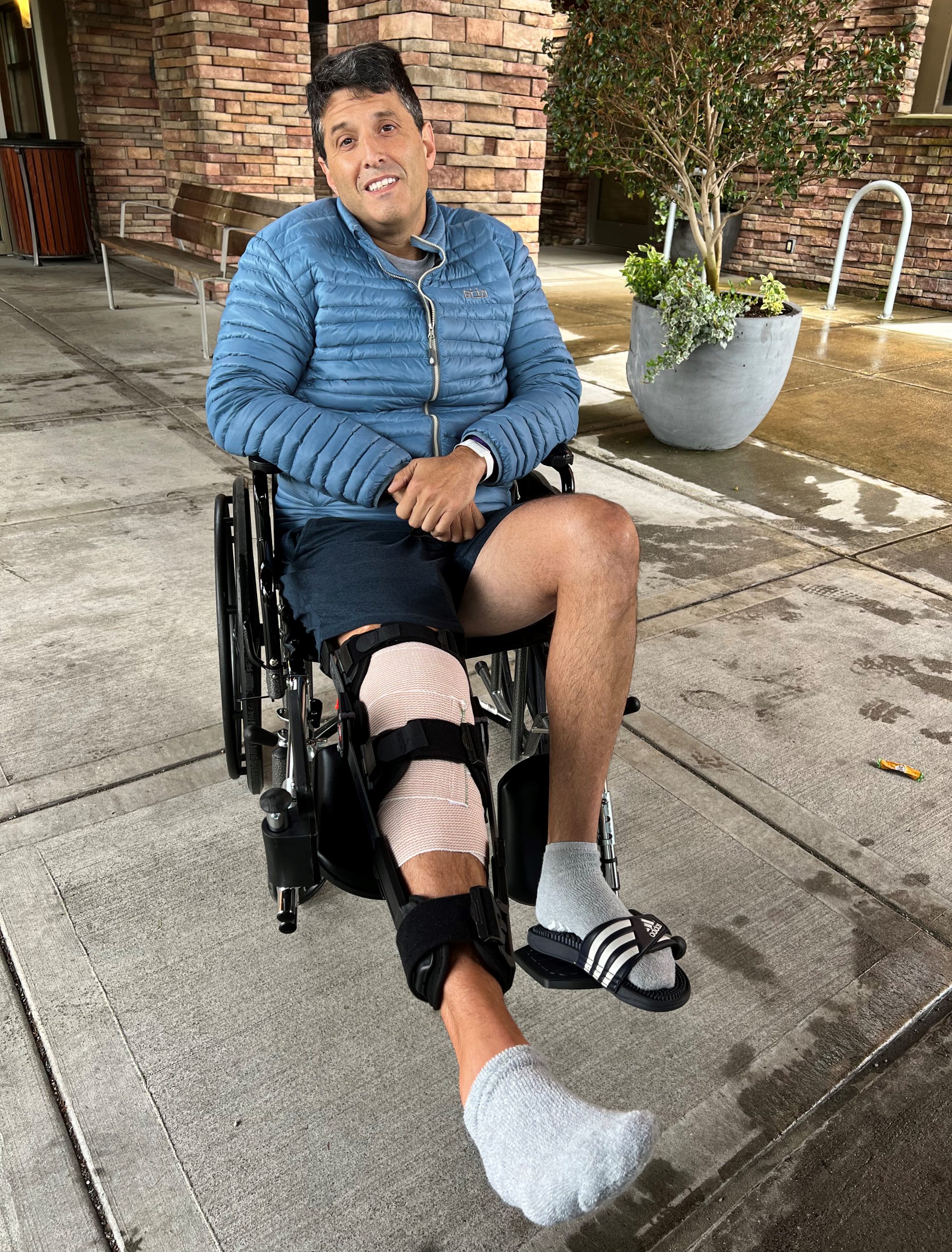I heard a subtle snap. I tumbled. My entire leg was immobile and numb for 10 minutes.
It was the first run of the day on Whistler Peak, a day off to ski with friends. Our group, made up of past & present Microsoft engineers, spent the morning rehashing some of our younger years starting Office 365. We were eager to get going, skipping any sort of warm-up that our now not-as-young bodies most likely needed. The visibility wasn’t good and the snow was heavy. But we charged forward in good spirits.
I took a turn around a mogul, heard a subtle snap and tumbled. My leg was numb. After a short rest I was able to pull myself up and ski down the hill. My ski day now shot, I made an appointment for an MRI later that week.
After my scan, the physician assistant called me back to tell me that the radiologist could not see my ACL. I had to ask “Did that mean it was hiding, or that I didn’t have one?” The doctor later explained to me that my knee was loose and shared the less-than-ideal options for ACL repair.
My choices were: do nothing and risk further damage that may or may not happen; repair with a cadaver tendon (potentially less painful, but some studies have shown it to also be less durable); repair using my hamstring (I was told this would be a painful recovery); use my patella tendon (this would involve even more pain); or finally use my quadricep (this one comes with the kicker of maximum pain). My choice!
Here I was, needing to make a decision that could impact my mobility for the rest of my life, without great data on a situation precisely like mine. What I needed was our fully envisioned Truveta. We have so much innovation yet to be completed with big data, natural language and image processing, and data visualization to make it real. Our team is working hard every day to make our vision real – to enable researchers to find cures faster, empower every clinician to be an expert, and help families like mine make the most informed decisions about their care.
But Truveta isn’t ready to answer my questions yet – so, I did my own survey and asked my Truveta colleagues who had gone through their own ACL repairs. One person chose cadaver. The next two went hamstring. A fourth went quadricep. I asked some of my friends who are athletes and they said they mostly go the hamstring route – so that is what I decided to do.

Post ACL surgery
On Friday I went in for surgery. Nine months of physical therapy and recovery ahead. High on my mind is a very personal reminder that the world needs Truveta, so that all patients can have the data they need to make the best choices for their care. I look forward to getting back to work soon.
And we’re hiring, well-funded to pursue our mission. Please apply here if you are interested in Saving Lives with Data with us!
